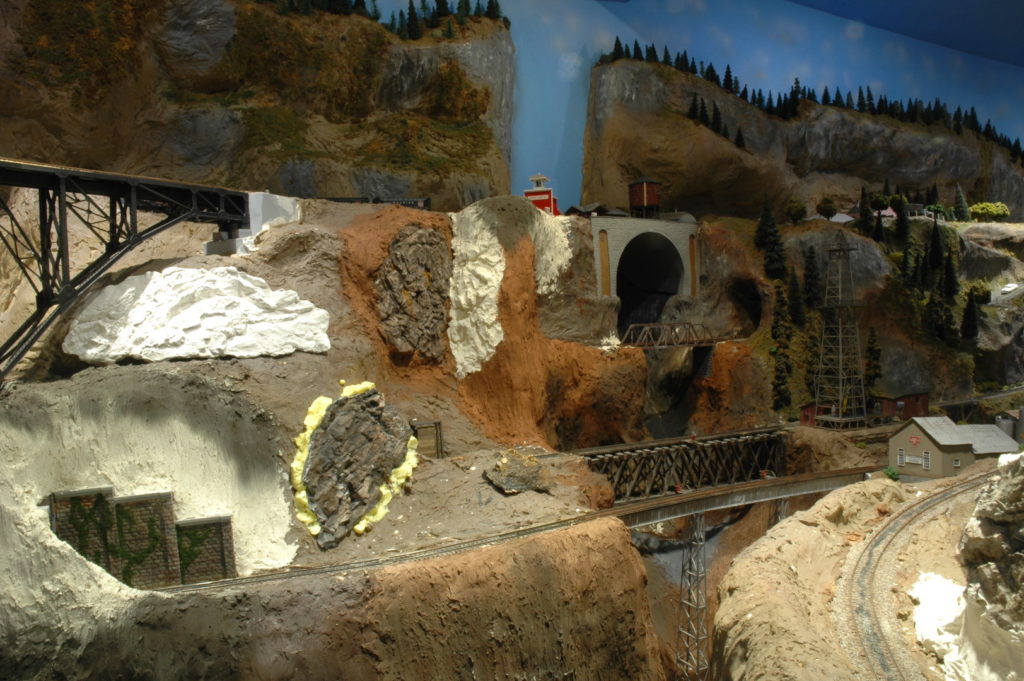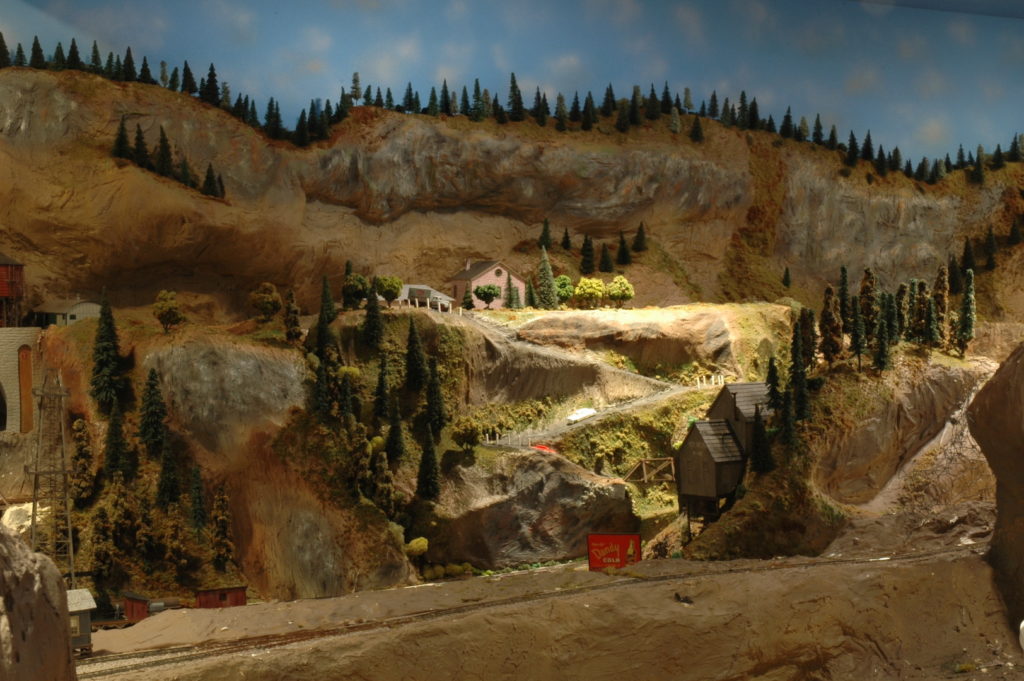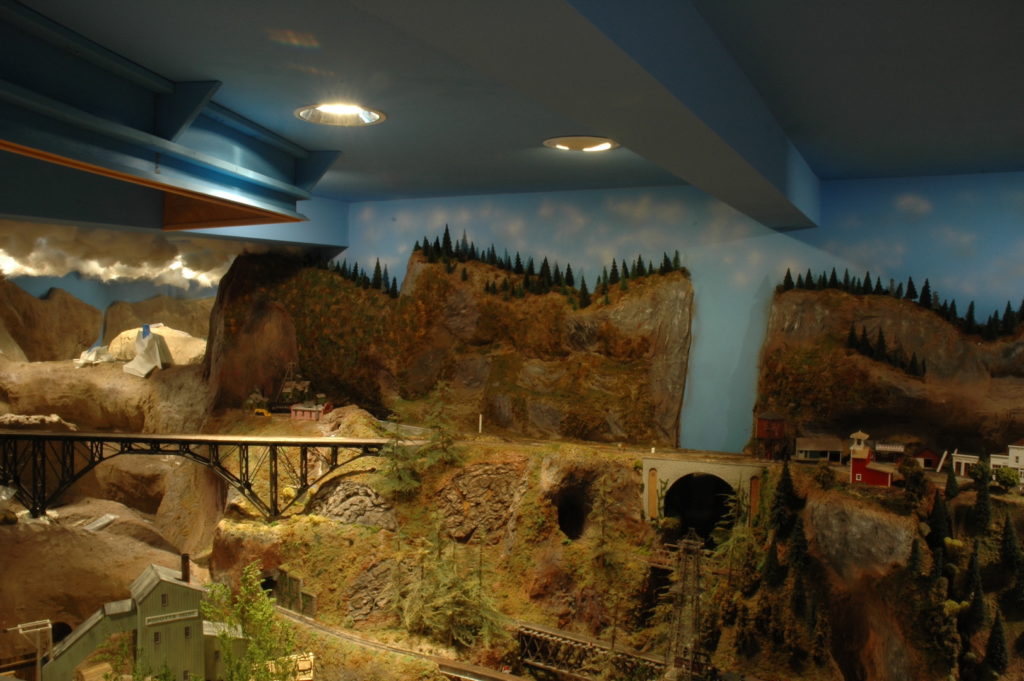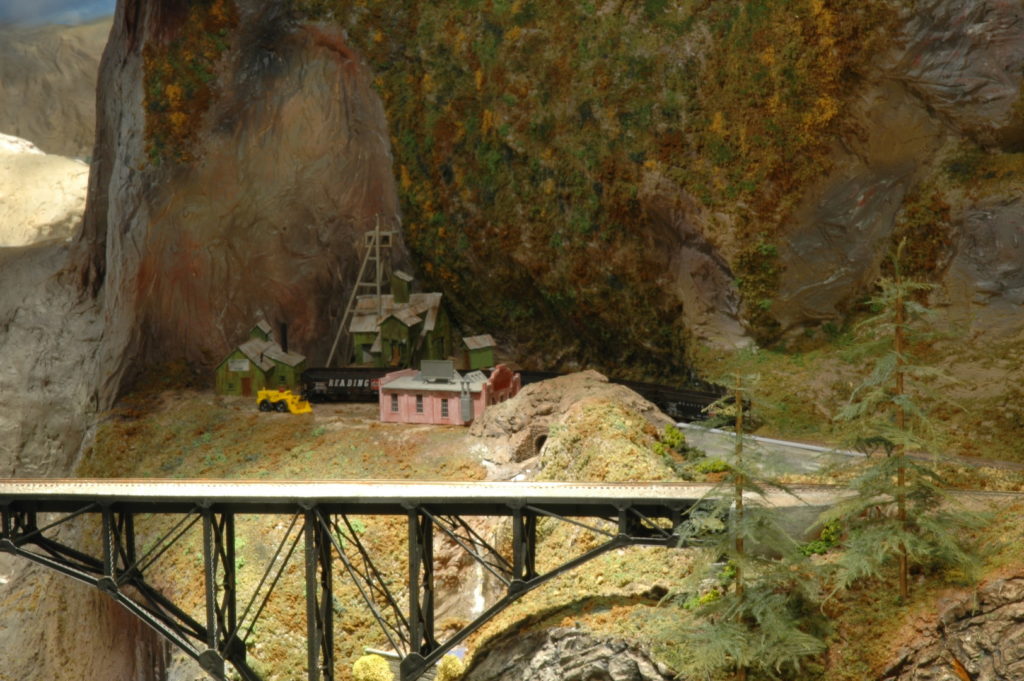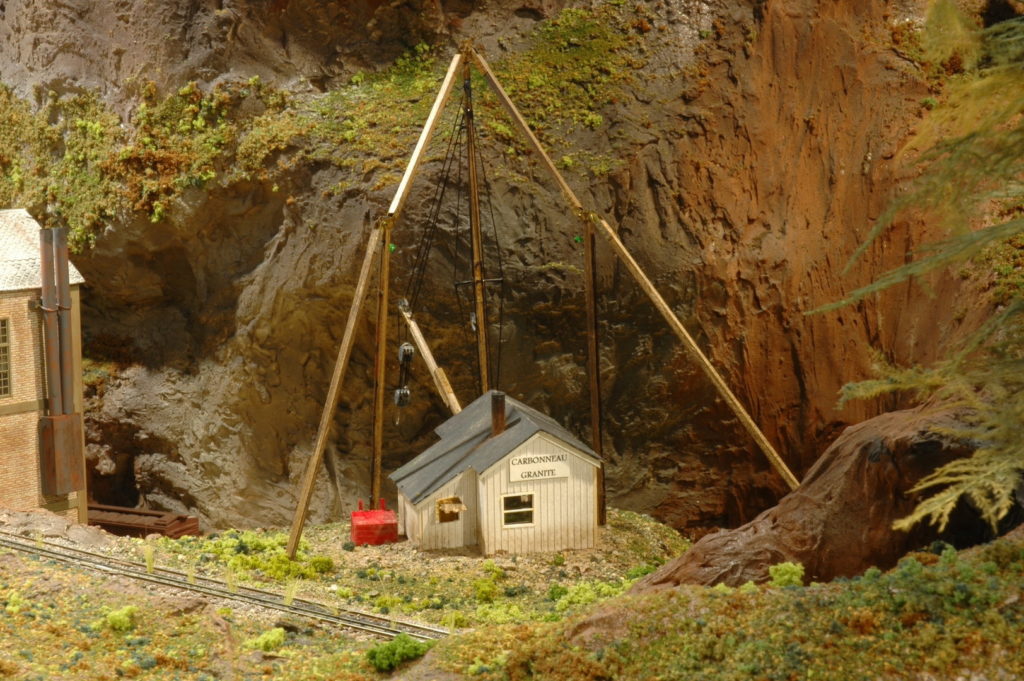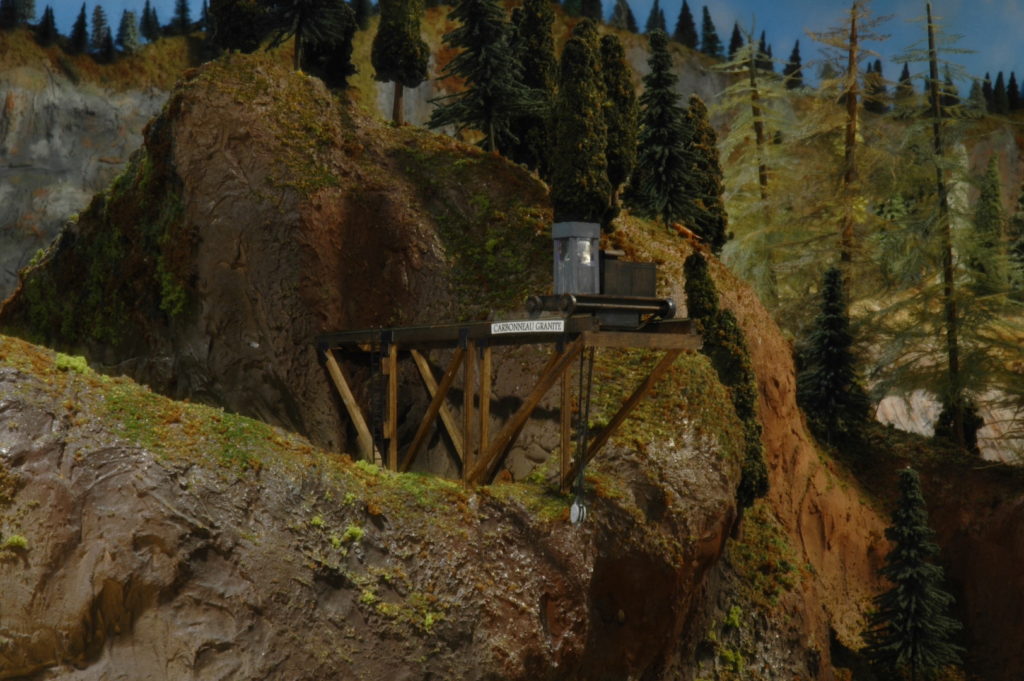Article & Photos by Ed Ives
The Maple Valley train show was started some twenty years ago by fellow Hi-Railer Henry Holwedell. Henry is long gone now but we like to attend this show in his memory. The show is a small community fundraiser located in a gymnasium, the Gracie Hansen Community Center. There obviously was no show last year due to the COVID and it was uncertain if there would be one this year. I was fearful that if there were no show this year it may be too difficult to resurrect further downstream. Not to worry though, the show went ahead.
The show consisted of eight layouts; two group O gauge layouts, the Hi-Railer’s and Pierce County Lionel group; a Marklin HO group; a live steam group; a LEGO group and three individual presentations including a suitcase Z gauge display. Set-up on Friday went quite well in spite of access only through one door. We, the Hi-Railer’s, were up and running by 3.30 PM, a record for the location for us.
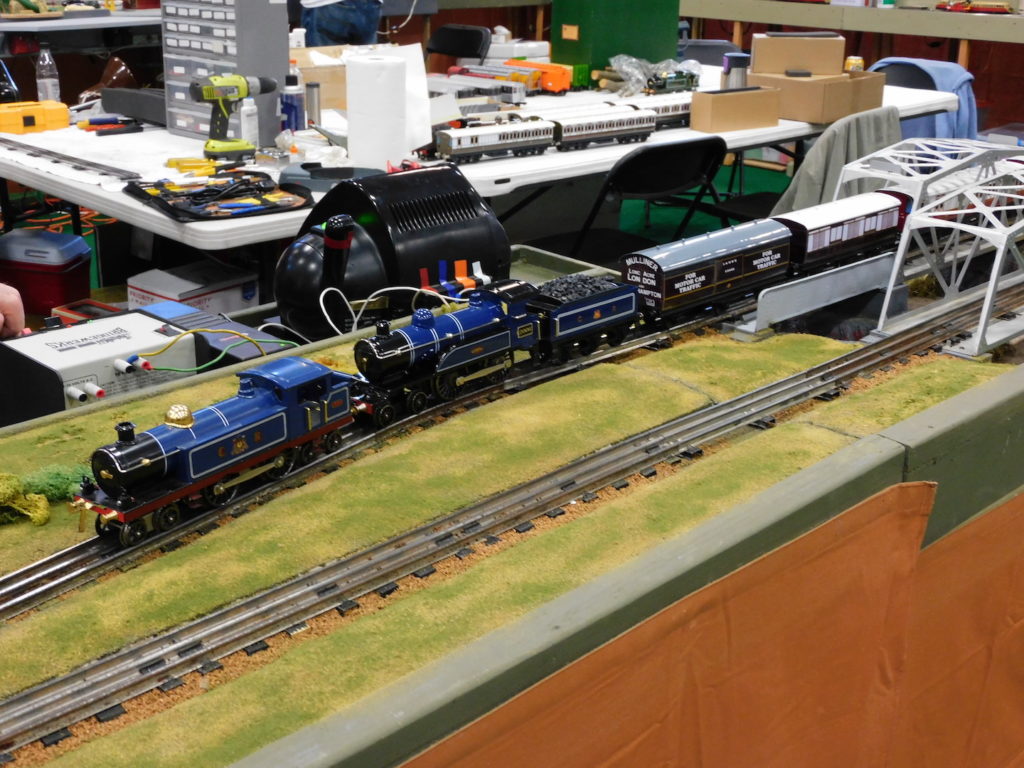
Saturday morning dawned at 7 AM where we were to do further development to the ex-Sam modules. Sam Hayden passed away three years ago and we managed to retain three of his modules and six of his accessories. Over the last two years we incorporated the accessories into the modules, added wiring, power supplies and button controls on the public side. Now we were to add the 1/43rd scale vehicles and people to add life to the scene. Thanks to the efforts of Ed Pennington, Dan Peters and Gordon Sandell who donated a plethora of material, the scene became alive with still action and a veritable traffic jam of vehicles.
The show opened at 10 AM and immediately a steady stream of people came in, not crowds. Masks were the order of the day and full compliance was observed without any complaint. There were many families with children, all very well behaved. The Sam modules gathered quite a lot of attention which was gratifying. Over the two days some 520 paying visitors came to the show which was considered a success. A typical show there would garner anything from 400 to over 600 over the weekend depending on weather and sports events.
A BIG personal thank you to Jack Klapwyk, Ed Pennington, Dan Peters and Gordon Sandell who did the set up, running both days and the teardown at the end. Without them we could not have participated.
Ed Ives







